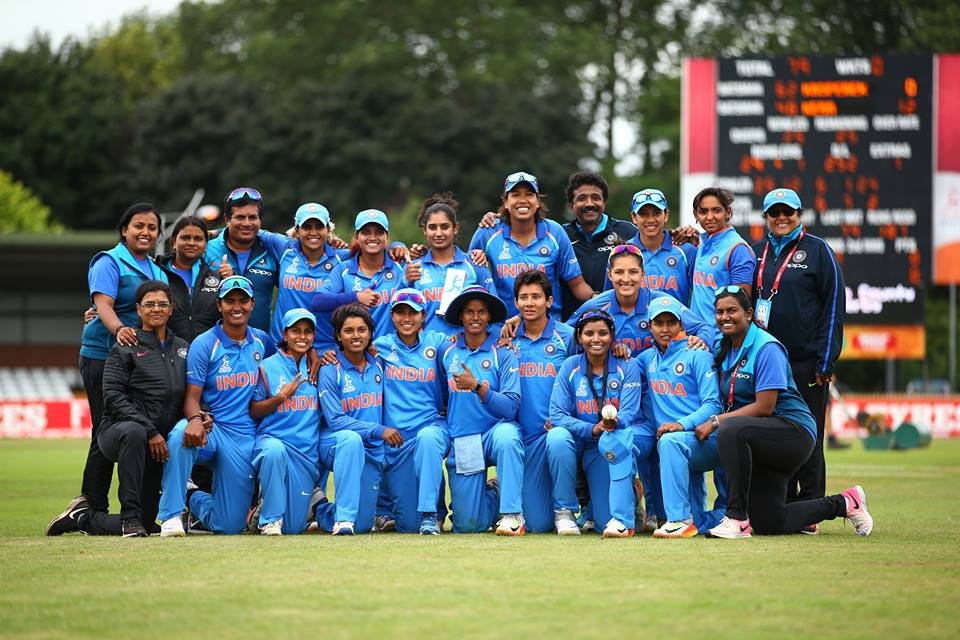India were within touching distance of their maiden World Cup title. Chasing the target of 229 against England in the final, India were cruising to victory at 191/3, but then came the batting collapse.
India panicked. They lost the remaining seven wickets for 28 runs. England won the World Cup by nine runs.
There was a time where the match was in the balance, but we panicked and that led to our defeat,” skipper Mithali Raj said after the match.
Team India were the surprise package of the tournament. They were not expected to be in Lord’s challenging England – one of the heavyweights of women’s cricketer – for the biggest trophy the game has to offer.

Their road to the final included massive casualties. Mithali-led side thrashed former world champions, New Zealand in a must-win game to qualify for the semi-finals. In their next game against mighty Australians, Harmanpreet Kaur produced one of the greatest ODI knocks to send the six-time champions back home.
They didn’t win the trophy, but they made millions of Indian to sit up and take notice of the ‘Women in Blue’.
Unprecedented attention
Cricket is not merely a sport, it’s a religion in India and cricketer are demigods here. But women cricketer have always been second-class citizens.
Think about this- the previous World Cup final appearance of the Indian Women’s cricket team in 2005 was not even televised in India. However, their stellar performance in the tournament has helped them push those boundaries.
Our women cricketers gave their best today. They have shown remarkable tenacity & skill through the World Cup. Proud of the team! @BCCIWomen
— Narendra Modi (@narendramodi) July 23, 2017
The team, the players, the tournament have witnessed an unprecedented attention in India. According to ICC, India’s four group stage matches which were televised, reached 52 million people – a 47% increase in TV audience in comparison to the last World Cup (2013). And this does not include the viewership numbers of the semi-final and the finals.
The final was televised on multiple channels in multiple languages in India. It was also available on the online platform Hotstar. The summit event dominated the front and sports pages of newspapers.
All this while we had each other’s back. Blessed to be part of this squad. It has been one amazing journey.#proudteamselfie #thankyou 🇮🇳🇮🇳 pic.twitter.com/CjaGoI2DDz
— Sushma Verma (@ImSushVerma) July 23, 2017
The journey to final provided a new identity to Indian women’s cricket. They have finally arrived in Indian households through their TV sets.
Better future
The average age of India’s squad is under 26, which falls further if you take the 34 years old Mithali and Jhulan Goswami out of the equation – both are unlikely to play another World Cup for India. This team is not only hungry. It’s also quite young. And there’s no reason why they can’t improve further from here.
The awe-inspiring performances of Harmanpreet, Smriti Mandhana and Punam Raut, which was witnessed by thousands of children on their TV sets will only inspire them to emulate the heroics of their inspirations, creating a supply line of talent.
The girls have shown that investment in the game will be worth it. Let’s do it.
— Harsha Bhogle (@bhogleharsha) July 23, 2017
The girls have shown that they could challenge the best at the grandest stage. At the same time, the wide coverage and tremendous following has also brought forward the commercial potential of women’s cricket. The success should pave way for more money in the game, which should also bring in the glamour and recognition the girls deserve.
The campaign could prove to be the revolution the cricketing landscape in India required. The girls could not bring the trophy home, but they have secured a better future for their sport.
Feature image: BCCI

















